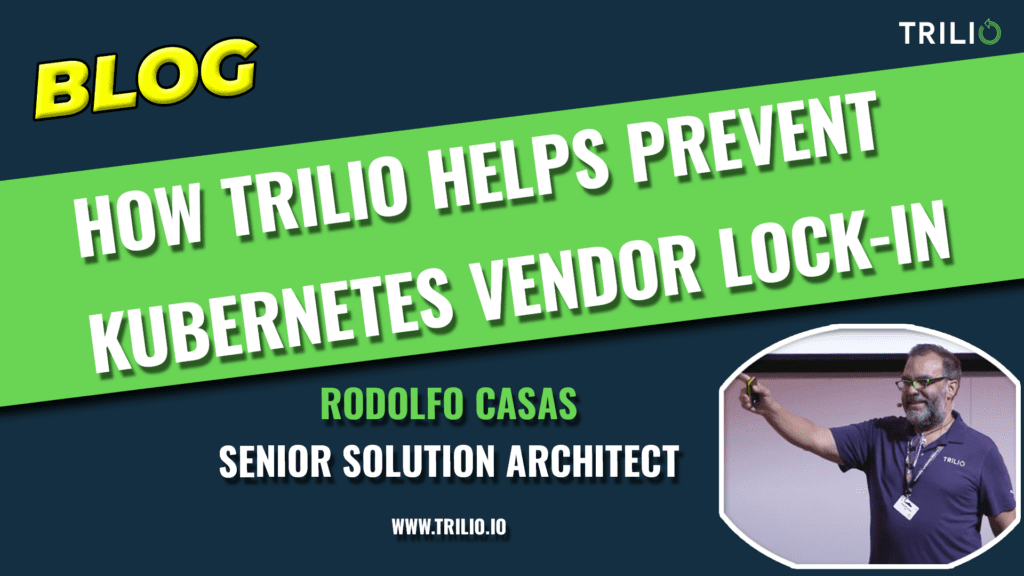This link Episode XIV: Circle of Life is to a really interesting and thoughtful article by Fatih Nar Chief Technologist at Red Hat, and Tom Conklin Senior Director at Red Hat. The article discusses the subject of on-premises versus cloud infrastructure, weighing the pros and cons of each and providing insight to the reader.
I am hoping that my point of view about this subject and the issues that get in your way because of vendor lock-in when you are running workloads on Kubernetes in public cloud providers is helpful to you. I am also hopeful that in this blog I can provide insightful thoughts about our innovative approach and how we can help organizations future-proof their infrastructure and data storage decisions and not worry so much about cloud versus on-premises and enable a true hybrid Kubernetes world.

Certified Kubernetes Software Conformance
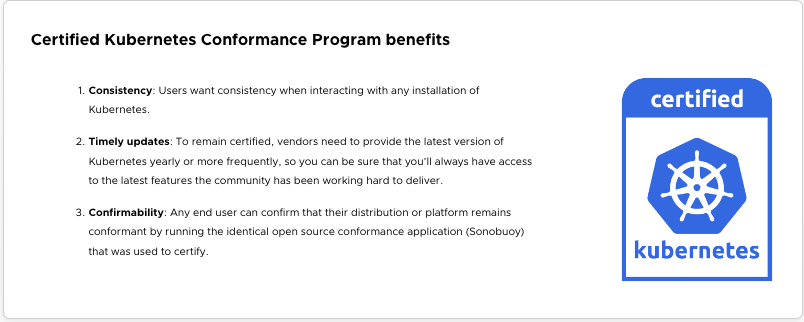
¨Software conformance ensures that every vendor’s version of Kubernetes supports the required APIs, as do open source community versions.¨
This means that you will be able to move your applications between distributions without worrying about vendor lock-in.
¨Conformance enables interoperability from one Kubernetes installation to the next. It allows them the flexibility to choose between vendors¨
Exploring Kubernetes in a Hybrid Cloud Environment
As businesses continue to embrace cloud technologies, the importance of having scalable solutions becomes crucial. Kubernetes, an used technology for orchestrating containers, offers a platform for efficiently managing and scaling applications within a hybrid cloud setup.
When considering the implementation of Kubernetes in a cloud environment, it is crucial to understand the implications of vendor lock-in. Vendor lock-in refers to the risk of relying heavily on a specific vendor’s technology and services, which could limit flexibility when it comes to switching to alternative solutions or providers. In this section, we will delve into the considerations surrounding vendor lock-in and how Kubernetes addresses this concern.
An Overview of Kubernetes as a Popular Container Orchestration Technology
Kubernetes has emerged as one of the leading platforms for container orchestration, enabling businesses to deploy, manage, and scale containerized applications across cloud environments. Its popularity stems from its ability to automate container operations effectively while optimizing resource utilization and ensuring availability for applications.
Discussion on Considerations Regarding Vendor Lock-in with Containerization Technologies
Containerization technologies like Kubernetes may introduce challenges associated with vendor lock-in. When organizations adopt container platforms, they run the risk of getting tied up with vendor APIs, tools, and integrations that could hinder portability between different clouds or restrict flexibility. To prevent dependence on a vendor, it is crucial to assess containerization technologies based on their adherence to open standards, support from the community, and compatibility with multiple cloud providers.
The significance of open source software and its ability to address concerns regarding vendor lock-in in relation to Kubernetes
Kubernetes is a project supported by a community of developers, contributors, and vendors. The transparent and collaborative nature of Kubernetes helps mitigate concerns about becoming locked into a vendor by promoting transparency, collaboration, and interoperability. This openness not only ensures flexibility but also allows for a wide range of tools, plugins, and compatible services offered by vendors.
Using Kubernetes allows organizations to take advantage of a range of tools, plugins, and compatible services offered by vendors while maintaining the flexibility to switch providers or deploy applications across hybrid cloud environments. Trilio, for instance, offers robust data protection and recovery services that can seamlessly integrate with your Kubernetes applications, enhancing the reliability and security of your hybrid cloud environment.
Kubernetes offers container orchestration technology for managing applications in hybrid cloud environments. While avoiding vendor lock-in can be challenging when using containerization technologies, the open source nature of Kubernetes and the support from its community play a role in addressing these concerns. By adopting Kubernetes and considering factors such as adhering to open standards and ensuring interoperability between systems, businesses can minimize the risks associated with becoming dependent on a vendor while benefiting from a flexible and scalable infrastructure for hybrid clouds.
Certified Kubernetes Conformance Program
This is the list of Certified Kubernetes Platforms. According to CNCF this means: ¨conformance enables interoperability from one Kubernetes installation to the next. It allows them the flexibility to choose between vendors¨
You can check on what Distributions Trilio will work out of the box, because those are CNCF Kubernetes Certified
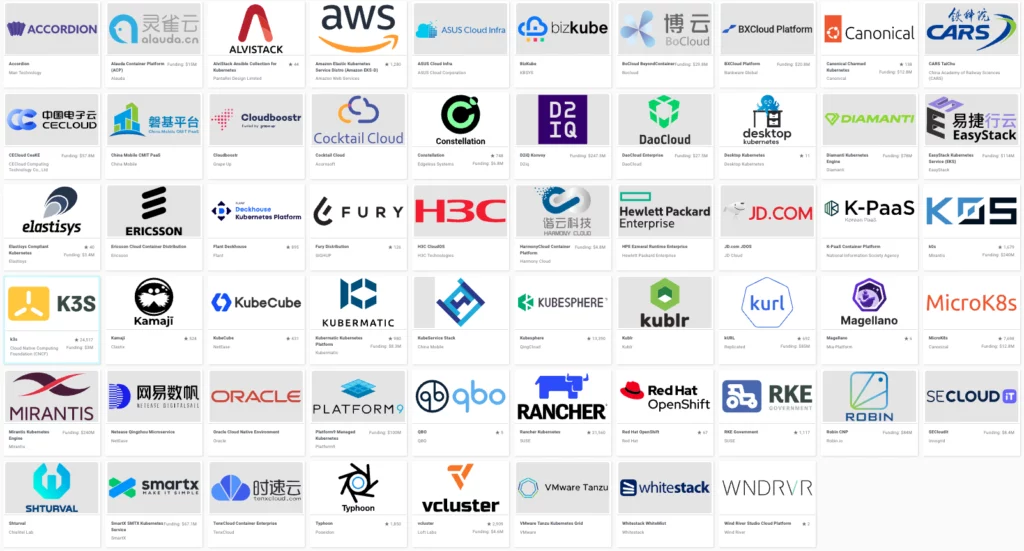
When it comes to deploying clouds the issue of being locked in with a vendor is a significant concern. Without planning and proactive measures businesses can find themselves in a situation where switching vendors becomes extremely difficult. However, by implementing strategies and following practices it is possible to effectively reduce these risks.
A. Introducing the concept of utilizing a cloud strategy to mitigate the risks of vendor lock in
One highly effective approach for addressing vendor lock-in in hybrid cloud deployments is adopting a multi cloud strategy. This entails using cloud service providers and distributing workloads across them. By doing so, businesses decrease their reliance on any vendor thereby mitigating the potential risks associated with being locked into one provider. This strategy offers flexibility. Ensures that businesses have the option to change providers without experiencing disruptions.
B. Explaining the advantages of employing a cloud architecture for scalability and flexibility
Another method for mitigating vendor lock in risks, in cloud deployments involves leveraging a hybrid cloud architecture. This type of architecture combines both private clouds granting businesses improved scalability and flexibility.
With a hybrid cloud, organizations have the flexibility to decide which tasks or operations they want to host on clouds and which ones they prefer to keep on clouds. This approach not only reduces the chances of being stuck with a vendor but also allows businesses to optimize their infrastructure according to their specific needs.
C. Emphasizing the necessity of data portability and interoperability in order to prevent vendor lock-in
To avoid getting locked into one provider it is crucial for businesses to focus on data portability and interoperability. They should ensure that their data can be easily moved around and seamlessly integrated into cloud environments. This way they can switch between providers or transfer workloads, between clouds without facing any obstacles or compatibility issues. By giving priority to data portability and interoperability organizations can maintain control over their data. Prevent being tied down by a vendor.
By adopting these strategies and understanding the risks associated with vendor lock-in businesses can navigate the complexities of cloud deployments effectively. Mitigating these risks not only enhances flexibility and scalability, but also safeguards long term success, in the ever changing landscape of cloud computing.
Certified Hosted Kubernetes Conformance Program
And this is the list of Certified Hosted Kubernetes Platforms. According to CNCF this means: ¨conformance enables interoperability from one Kubernetes installation to the next. It allows them the flexibility to choose between vendors¨
You can check on what Hosted Distributions Trilio will work out of the box, because those are CNCF Kubernetes Certified
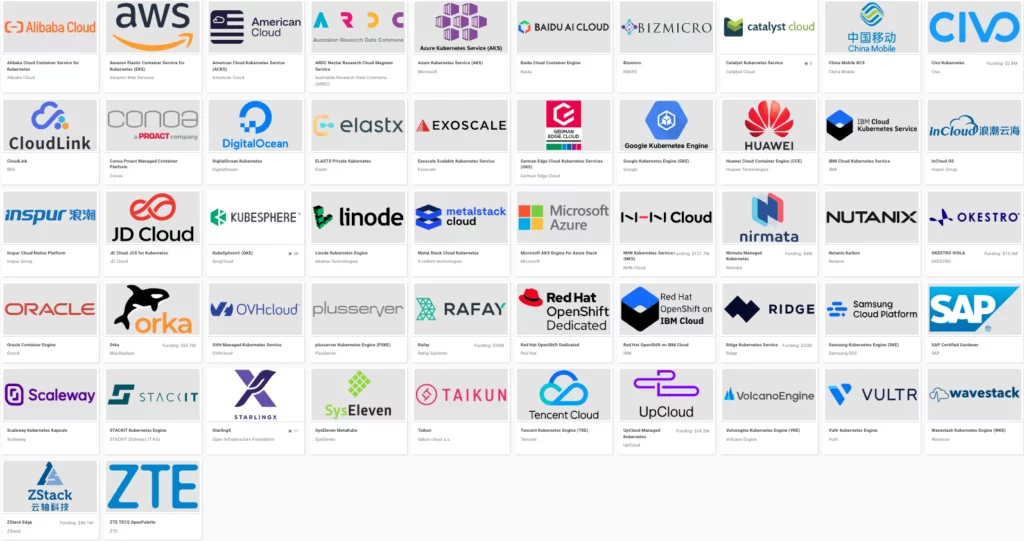
Implications of Vendor Lock-in on Cloud Service Selection
The impact of being tied to a cloud service provider should be considered when selecting a cloud service, for a cloud deployment with Kubernetes. Vendor lock-in occurs when customers become reliant on a vendor’s technologies, which can make it challenging or costly to switch to another vendor or solution.
A. Understanding the range of cloud services provided by vendors
Vendors offer types of cloud services including:
- Infrastructure as a Service (IaaS): Vendors provide infrastructure resources such as machines, storage and networking.
- Platform as a Service (PaaS): Vendors offer platforms with preconfigured software and development tools for application deployment and management.
- Software as a Service (SaaS): Vendors host applications. Provide them to clients without the need for managing infrastructure or software.
B. Recognizing consequences of being locked into a vendor:
In the context of cloud deployments using Kubernetes utilizing specific cloud services from one vendor may result in the following repercussions:
- Interoperability limitations: The use of technologies or APIs by the vendor might restrict compatibility with cloud platforms or tools.
- Limited data portability: Moving data and applications to a vendor or on premises infrastructure can be quite challenging due to formats or dependencies tied to the vendor.
- Decreased flexibility and agility: Relying solely on one vendor may restrict your ability to explore solutions or adopt technologies.
C. Discussion on managing costs and its connection to being locked in with a vendor:
Being locked in with a vendor can have significant cost implications:
- Limitations in negotiating prices: Having limited options for vendors can limit your negotiation power potentially resulting in pricing terms and contractual agreements.
- Costs of switching: The expenses associated with migrating data reconfiguring applications and training staff members can be substantial when transitioning between vendors.
Dependence on vendor services: Using services from a specific vendor may lead to higher costs or difficulties in finding equivalent services from other providers.
It is crucial to consider these implications when making decisions about cloud services as they can impact the scalability, flexibility and overall success of your cloud implementation.
The Role of Vendors in Preventing Vendor Lock in
When it comes to embracing Kubernetes in hybrid cloud environments, the choice of vendors plays a significant role in avoiding vendor lock-in. Opting for reputable vendors can facilitate a smooth transition to a hybrid cloud infrastructure and mitigate the risks associated with being tied to a single vendor.
A. The Importance of Choosing Reputable Vendors when Adopting Kubernetes in Hybrid Cloud Environments
Reputable vendors have established track records in delivering efficient solutions. By partnering with such vendors, businesses can benefit from their expertise and industry knowledge, ensuring data portability, flexibility, and enhanced data protection capabilities. This can include specialized solutions like Trilio for data protection.
B. Discussing the Significance of Managed Services in Minimizing the Risks of Vendor Lock-In
Managed services provided by vendors can significantly contribute to avoiding vendor lock-in in cloud deployments. With managed services, businesses can leverage the expertise of vendor teams, ensuring data protection, performance, and scalability while enhancing disaster recovery capabilities.
C. Analyzing Business Approaches for Ensuring Flexibility and Reducing the Risk of Long-Term Vendor Dependence
Strategies for businesses to maintain flexibility and minimize the risks of being locked into a vendor for the long term include utilizing standardized Kubernetes APIs, following open-source frameworks, and implementing containerization using technologies such as Docker. By incorporating these approaches and collaborating with data protection specialists like Trilio, businesses can enhance compatibility across vendors and ensure robust data protection and recovery capabilities.
By considering reputable vendors, including specialized solutions like Trilio, and implementing these strategies, organizations can make informed choices to enhance their hybrid cloud environments while reducing the risks of vendor lock-in.
A little bit about Trilio’s Kubernetes Data Protection Solution
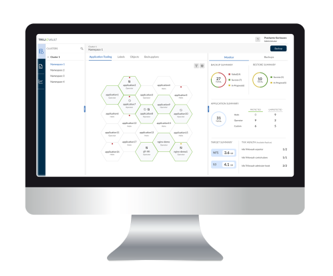
Trilio provides an application-centric backup and intelligent recovery solution for cloud-native applications based on Kubernetes and Red Hat OpenShift. Our platform enables organizations to intelligently recover their Kubernetes applications, including metadata, configurations, and data through automation and orchestration. As an application-centric Intelligent Recovery Platform, organizations can backup and restore individual applications, rather than the entire Kubernetes cluster. This approach saves time and reduces the cost required to back up, restore, and migrate Kubernetes applications.
Trilio supports numerous Kubernetes distributions, including Red Hat OpenShift, SUSE Rancher, and other CNCF-compatible distributions. Trilio also supports a number of public cloud providers, including AWS, GCP, Azure, and others. Ultimately, with Trilio, organizations can confidently back up and restore their Kubernetes applications, regardless of the underlying Kubernetes distribution, private cloud infrastructure, or public cloud provider in use. This flexibility, scalability, and control make Trilio the best solution to satisfy customer requirements and solve needs.
Read on to discover how Trilio can help your business stay ahead of the curve in the ever-changing world of data management.
How does Lock-in of Cloud Native Applications Occur?
Kubernetes vendor lock-in can occur in several ways.
-
- When an organization uses cloud offerings from Amazon Web Services (AWS), Microsoft Azure, or Google Cloud Platform (GCP), they offer managed Kubernetes services. With limited capabilities, these offerings provide ease of use, but make it challenging for organizations to switch to other cloud providers.
-
- If an organization uses a more robust Kubernetes distribution from a vendor, such as VMware, Rancher, or Red Hat lock-in occurs too. Their Kubernetes distributions are tailored to their products and services, making it challenging, and costly to switch to other vendors’ platforms and products.
One of the most significant contributors to vendor lock-in in the public cloud is egress charges. Egress charges refer to the fees that cloud providers charge for data that leaves their network. These charges can add up quickly, especially for organizations that need to transfer large amounts of data out of the cloud. This could result in the cost of moving to another provider being prohibitive due to the egress charges.
For example, if an organization is using a specific cloud provider to host its application data, a change in vendors make necessitate a large transfer to another provider. The egress charges for this transfer can be significant, which can discourage an organization from implementing change, leading to vendor lock-in, and hindering innovation and modernization.
Application Migration
One of Trilio’s most looked out feature is ¨Application Mobility” also known as ¨Application Migration¨.
It will allow you to easily move your application between Kubernetes distributions.
If you want to learn more, please visit our ¨Application Mobility and Why Should You Care¨ blog post
Or check our solutions page about ¨Application Mobility¨
How can egress charges be avoided?
At the end of the day, when you move your data out of some S3 bucket in the public cloud it has a cost. Another way of data gravity, and vendor lock-in.
There are several ways public cloud customers can reduce egress charges, you can find multiple tips and tricks online. In this blog post by IT Convergence, there is a good summary of how to “detect” those costs, and some ways to avoid them: What are Cloud Egress Charges and How to Manage Them
But at the moment there is no way to completely avoid charges when you are moving data out of a public cloud or across its availability zones.
Also, there are other solutions available that can help organizations to avoid these charges and reduce their dependence on a single cloud provider.
One such solution is Wasabi Storage Fast, Affordable Cloud Storage & Secure Data Protection. Wasabi offers a cloud storage service that provides organizations with affordable, high-performance, and durable storage for their data. One of the significant advantages of using Wasabi is that they do not charge egress fees for accessing data from their storage service, which can significantly reduce costs for businesses. We think the industry is going to evolve and egress charges will be reduced slowly or even removed completely.
Another vendor that comes to my mind is Rackspace Data Freedom | Destroy Egress Fees and avoid Cloud lock-in, and according to them “Rackspace Data Freedom enables you to remove these barriers by storing data centrally, outside of any particular cloud, and transporting it via our private, fast and secure global network backbone while ensuring your data is available to any cloud service.”
In conclusion
After examining the implications of vendor lock in and the role of Kubernetes, in a cloud environment it becomes clear that taking vendor lock in into account is crucial when implementing Kubernetes.
Throughout this discussion we have emphasized points regarding Kubernetes, hybrid cloud and vendor lock in. We have explored the risks associated with vendor lock-in in cloud deployments. Stressed the significance of mitigating these risks.
It is vital to comprehend the business and data related challenges linked to vendor lock-in within cloud deployments. These challenges can have repercussions for organizations, including flexibility, increased expenses and reliance on a single vendor.
As businesses increasingly adopt cloud environments it becomes imperative to select cloud services and consider the consequences of vendor lock in. Organizations should prioritize vendors that offer interoperability, adhere to open standards and provide flexibility to avoid becoming trapped by technologies.
By considering vendor lock-in, in cloud deployments and opting for vendors that prioritize standards businesses can optimize their flexibility, minimize expenses and retain control over their data and applications.
